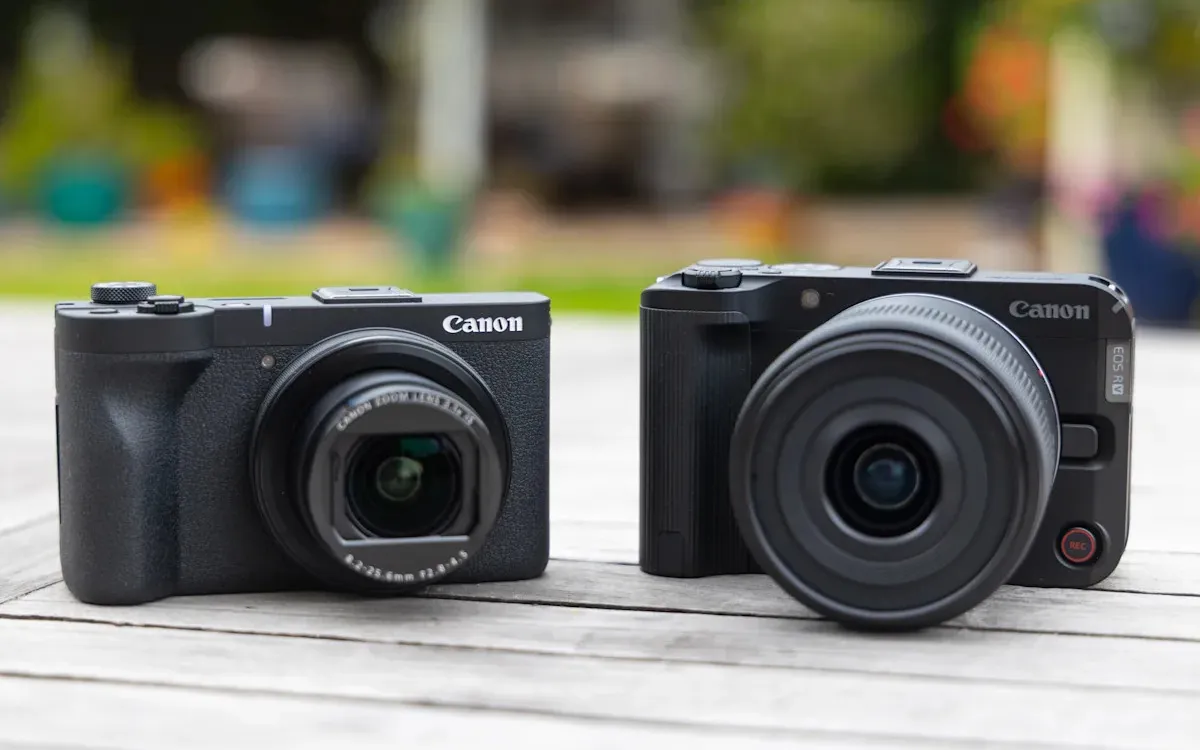
In a significant move to enhance its vlogging camera lineup, Canon has announced two new models: the R50 V mirrorless camera and the PowerShot V1 compact camera. These new offerings are strategically designed to compete against Sony's popular vlogging cameras, elevating Canon's status in the content creation market.
The PowerShot V1 has recently made its debut in Japan and is now set to launch in North America. This compact camera features an innovative 1.4-inch sensor, significantly larger than those found in most compact cameras. Its 22.3MP sensor is comparable in size to Micro Four Thirds, providing an optimal horizontal aspect ratio for video content creators.
Equipped with a 17-52mm (3.1x zoom) f/2.8-4.5 lens, the PowerShot V1 excels in low-light conditions, offering a shallower depth of field than its competitors, notably the Sony ZV-1 II. Weighing in at 426 grams (15 ounces), the camera is heavier than typical compact models, which may be a consideration for on-the-go vloggers.
While the PowerShot V1 lacks extensive manual controls, it does feature a top mode dial, a rear setting dial, and a lens dial for aperture adjustments. The camera is equipped with a 3-inch, one-million-dot fully articulating display, although it does not include an electronic viewfinder, similar to the ZV-1 II.
In terms of video capabilities, the PowerShot V1 can shoot 4K video at 30 fps while utilizing the full sensor width, as well as 4K 60p video with a 1.4x crop. It also supports 1080p recording at an impressive 240 fps. For enhanced video quality, the camera includes Canon's C-Log3 with 10-bit 4:2:2 capture, allowing for improved dynamic range and grading options.
To combat overheating issues, the PowerShot V1 comes with a built-in cooling fan, enabling unlimited recording times at all resolutions. Additional features aimed at content creators include a close-up demo mode for quick focusing and a smooth skin mode for beauty-focused content. The camera employs Canon's Dual Pixel II autofocus system, which includes subject detection and face/eye tracking capabilities.
For photography enthusiasts, the PowerShot V1 offers a physical mechanical shutter capable of shooting bursts at up to 30 fps with autofocus in electronic shutter mode. A built-in ND filter, equivalent to three stops of light reduction, is a welcome addition for achieving bokeh on bright days. The camera supports a small LP-E17 battery and features a single UHS-II card slot, along with microphone, headphone, and microHDMI connectors.
Despite its impressive features, the PowerShot V1 comes with a price tag of $900 and is expected to be available in April 2025.
The EOS R50 V is Canon's first dedicated mirrorless camera tailored for vlogging, designed to rival the Sony ZV-E10 II. This model is slightly taller than the PowerShot V1 but shares similar dimensions, weighing marginally more with the included 14-30mm (21-45mm full-frame equivalent) f/4-6.3 power zoom lens.
Equipped with a 24MP APS-C sensor, the R50 V incorporates features from Canon's Cinema EOS system, including C-Log3 capture and 10-bit 4:2:2 video. The camera can capture 4K video at 30 fps using the full sensor width or 4K 60p with a crop, making it a versatile option for both video and photography.
Vloggers will appreciate the R50 V's fully articulating 3-inch display, although it also lacks an electronic viewfinder. The camera's manual controls include a primary control dial, a zoom rocker for supported lenses, and a mode dial that offers multiple custom video settings, such as Movie Auto Slow Shutter and Movie IS Mode.
The R50 V’s autofocus capabilities are powered by Canon's latest Dual Pixel II system, featuring face and eye detection, along with subject tracking for various subjects, including animals and vehicles. A dedicated button allows for instant livestreaming with support for multiple modes, including UVC/UAC and HDMI.
The EOS R50 V will be offered at a price of $650 for the body only, or $850 with the new RF-S14-30mm F4-6.3 IS STM PZ lens, sold separately for $330. Additionally, Canon has announced the RF 20mm f/1.4L VCM full-frame lens, further expanding its hybrid cinema-friendly lens lineup.
Both the PowerShot V1 and EOS R50 V are set to impress content creators, and while I've only had a brief experience with these models, in-depth reviews will follow shortly.